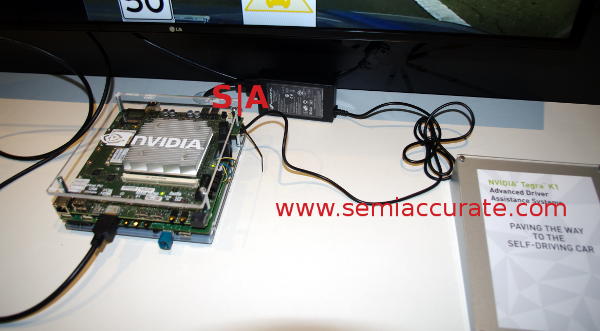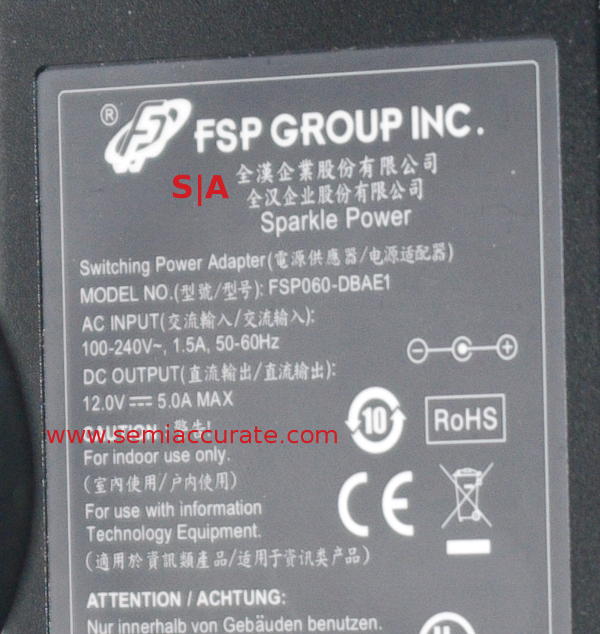![]() Remember when SemiAccurate said the Nvidia Tegra K1 was a hot dog promoted by complicit ‘journalists’? MWC provided two new data points for that thesis and both are pretty damning.
Remember when SemiAccurate said the Nvidia Tegra K1 was a hot dog promoted by complicit ‘journalists’? MWC provided two new data points for that thesis and both are pretty damning.
A little bit of back story on the Nvidia T40 SoC aka Tegra 5 aka Tegra K1. Nvidia claims that it is a good device for everything, low power, excellent performance per watt, and features no one else has like OpenGL non -ES. It is said to be nothing short of the best at everything, accompanied by demos that ‘prove’ it. SemiAccurate on the other hand pointed out how Nvidia was deceiving journalists with skewed demos, fabricating power numbers, and making unrealistic claims meant to appeal to financial analysts. In short the Tegra K1 presentations were a grand show, but one with a definite purpose.
The demos that Nvidia clams show a better performance per watt than Apple’s A7 were skewed to the point of being intentionally deceitful, there is no way it can be replicated in products for reasons explained in the link above. OpenGL full is claimed as a feature, something Imagination for one has offered for years but no customer implements for power consumptions and suitability reasons. Worse yet the raw power claims made by the company were called in to question by the demo systems shown off.

The same Tegra K1 demo as shown under NDA at CES
One of the new data points of Tegra K1 is actually an old one, one we were told about but didn’t realize at CES. The issue at hand is that the massive heatsink above is not just a massive heatsink, it is actively cooled too. A heat sink alone of that size is significantly larger than something a tablet or phone chip could ever reasonably call for, it is a glaring red flag. The fan on the side is simply astounding, this part pulls an unacceptable amount of power as we said.
Nvidia has tried to counter this argument through backchannel ‘leaks’ to gullible press but so far no one seems to have bought the line. One could claim that it is early un-optimized silicon, overclocked for demo purposes, or both which lead to the high power use. A tablet or phone needs passive cooling and is thus limited to 2-3W, maybe 4W in a really big and thick device.
The Nvidia Tegra K1’s shown publicly are a significant multiple of that number, there is no way this chip can reside in a tablet, much less a phone, without serious underclocking. If you run the basic numbers, cutting 2/3rds of the power will require enough clock lowering to make the K1 completely uncompetitive with current SoCs much less the next generation that will be released before the K1. For mobile uses, this SoC is pointless. For the other 1% of the market by volume, there is a place for Tegra K1 so things aren’t all bad.
As you can see from the first image, there are two cables running in to the K1 demo box, one is power the other is HDMI to the monitor. Please note that you can see both the in and out lines to the power brick above and they do connect to the demo box, and only the demo box. Below is a closeup of the power brick label from another picture taken at the same time for clarity. Feel free to check the image metadata if you don’t believe it.

And the kicker is….
For the math averse, 5 * 12 = 60, so the power supply for this K1 demo is a 60W feed. If that number makes your jaw drop, you do get the right picture, this system has a massive draw. To be fair to Nvidia, the K1 demo almost assuredly does not pull anything near the 60W maximum for the power supply, it was warm to the touch but not blisteringly hot. In short it is pulling enough power to warrant its size but nowhere near the 60W max. Based on this and other information, SemiAccurate estimates a 35-40W draw for the entire system.
Another point is that these boards have many other components and devices on them, that fan for example probably pulls a low single digit number of watts by itself. That said there is only one large heatsink and it is on the SoC. Similarly the fan is placed to blow directly over the SoC, it is placed in a notch in the heatsink itself. Based on this, it is unlikely that there are any other high wattage components that draw anything near the 10W++ of the Tegra K1. It is similarly unlikely that the rest of the board takes up more than a handful of Watts too, there just isn’t anything physically there.
What does all this tell us? It tells us that our initial analysis of the K1’s performance was, if anything, understating things. The Tegra K1 is unquestionably out of line in power and it can not perform at the claimed numbers within the claimed power envelope. Nvidia is unquestionably being deceitful with regards to the K1’s performance, market suitability, and overall chances. That part is nothing new, what is new is that the press are finally starting to question Nvidia’s claims and data.S|A
Have you signed up for our newsletter yet?
Did you know that you can access all our past subscription-only articles with a simple Student Membership for 100 USD per year? If you want in-depth analysis and exclusive exclusives, we don’t make the news, we just report it so there is no guarantee when exclusives are added to the Professional level but that’s where you’ll find the deep dive analysis.
Charlie Demerjian
Latest posts by Charlie Demerjian (see all)
- Qualcomm Is Cheating On Their Snapdragon X Elite/Pro Benchmarks - Apr 24, 2024
- What is Qualcomm’s Purwa/X Pro SoC? - Apr 19, 2024
- Intel Announces their NXE: 5000 High NA EUV Tool - Apr 18, 2024
- AMD outs MI300 plans… sort of - Apr 11, 2024
- Qualcomm is planning a lot of Nuvia/X-Elite announcements - Mar 25, 2024